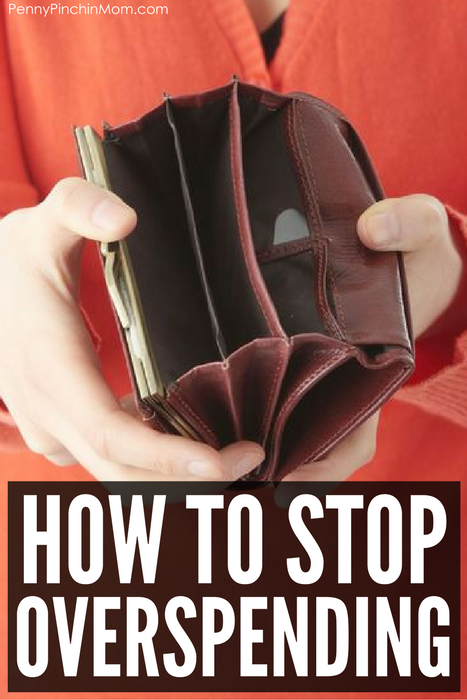How in the world to prevent overspending? Is it even possible?
I am sure it has happened to all of us. You are doing your weekly shopping and plan on spending only a set dollar amount. A few good deals pop up and before you know it you’ve spent twice as much as you planned!
There are some simple things that you can do to help ensure that you don’t overspend.
1. The Shopping List Trick. This is the best tip I can offer. Make a list. Then, always force yourself to stick with it!!
I personally never shop without a list. The list keeps my eye on those items I need. Not only does it help me keep my spending in check, it actually saves me a LOT of time.
I don’t wander the aisles just looking at items. It keeps me focused to purchase the items I need. When I get home, I’ve only spent the amount I planned.
Added bonus: It also prevents me from having one of those “Oh – I Forgot the ________!!!!!” moments.
2. Don’t use your coupons & avoid traps. This is not a typo. What it means is don’t use a coupon to purchase something you normally wouldn’t. If you don’t buy “that brand” of a product, don’t buy it simply because of a coupon.
A coupon is not a golden ticket to shop. You are wasting money if you buy something only because you have a coupon. A deal is only a deal when you find a discount on an item you normally purchase.
In addition to this, avoid the clearance aisles and end caps. These are money spending traps! You walk by and your eye is drawn the end cap with the big SALE sign in front of it. If you don’t need that item, don’t grab it. Also, don’t walk by the clearance section. It is very easy to pick up items you don’t really need. That makes you again spend money you had not planned on.
Instead, shop the sections you need. If you need detergent, just go to that section and grab your item and then go to the next on your list. Don’t wander through the store as you will be more likely to do “cart tossing.” This is when you put item in your cart without noticing what you are spending.
3. Budget. With a budget in place, you know how much you have to spend on groceries, clothes and more. If you do not have one, you often spend willy-nilly and don’t even realize it. When you have a set budget for $300 on groceries for a two week period, you know that is all you can spend. No more. If you spend $350, then you have to take that money from somewhere else in your budget.
Budgeting is tough – I will not lie. However, once you have one in place and get use to following it, you will feel more balanced. It really helps you keep your spending in check.
4. Clean and declutter. This tip actually has an added benefit. First of all, when you declutter, you find all of those items you’ve spent money on and no longer need. It makes you realize where you are spending. You will also recall how clean your closet now is. Do you really want to fill it back up with more stuff?
The added benefit of decluttering is that it keeps your house clean and organized! You can find what you need more easily and don’t have so much “stuff” cluttering the house.
5. Know How Much You Have to Spend and Track It. Keep track of your spending by adding up the amounts on your phone. That way, you’ll have no surprises when you get to the checkout lane. You can try Calculator for Shopping on iTunes. This is one of my favorite tricks to help prevent overspending.
6. Stay Home / Keep Busy. If you go to the store simply out of boredom, you will spend money. Even if you are “window shopping” you will probably head home with something you normally would not have. If you feel the need to go to the store out of boredom, find something to do. You might read a book, play with your kids or even go for a walk.
7. Keep emotion out of shopping. One tip is to never shop hungry. When you do, your stomach controls what you buy. The added benefit is buying the healthy foods you need.
If I am feeling badly about myself, buying something I have been wanting may end up making it’s way home with me. Spending money to make myself feel better never works.
There a many emotions attached to spending. You have to identify which one(s) apply to you and find a way to fulfill that need through another method – other than spending money.
8. Define Needs vs. Wants. There are items we need. You need food, but do you need the extra box of cookies? Yes, the sweater is really cute, but is is something you need or just something you want. Ask yourself “is this a need or a want” with each item you buy. You’ll soon be on your way to less overspending.
9. Stick with cash. When you have $100 to spend, you are much more aware of what you are placing into your shopping cart. You have a limited amount of money to spend. However, using a debit or credit card may not make you as aware of the final total.
Not only that, it hurts much more to hand over cash than it does to swipe a credit card. Cash makes you think twice before you make a purchase.
10. Save first, spend later. It is important to always pay yourself first. Remember that the amount you have to spend is what is left over after you pay your bills and pay yourself.
You should always tell your money where to go instead of it deciding for you. So many do that the opposite and save after they spend. If you always save a little, you will quickly build a nice emergency fund and can have less guilt about your spending.



